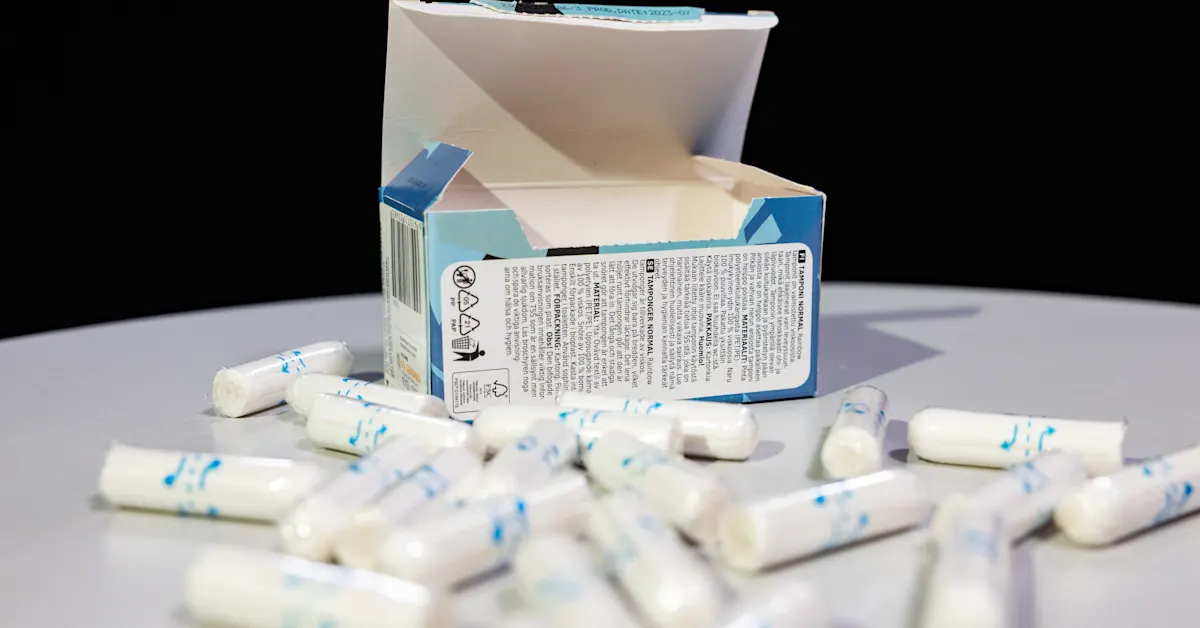Copyright yle

Over the course of her life, the average woman uses around 15,000 menstrual products. Those with heavier periods may need far more. In total, women use these sanitary items for roughly 2,500 days, some seven years of continuous exposure to whatever materials and chemicals they contain. Menstrual products are among the most mundane of consumer goods, and in recent years, questions are increasingly being asked about whether their safety is under-researched. What are the long-term health effects of the fibres, fragrances and additives that come into contact with women's bodies for such a large portion of their lives? Tampons, it turns out, may be a small but measurable source of metal exposure. A recent study published in Environment International, led by the UC Berkeley School of Public Health, detected metals in all types of tampons. Before that, in 2023, a study published in the International Journal of Obstetrics and Gynaecology examined the chemical composition of the most commonly used menstrual products: pads, tampons and panty liners. Every product tested contained some amount of potentially harmful substances, including dioxins. The researchers noted that dioxin levels have been less frequently studied in recent years, largely because modern bleaching methods for tampons and pads are thought to have reduced the risk. The study also detected phthalates — chemicals commonly used as plastic softeners — in several of the products. A French consumer magazine reached similar conclusions: tests on 24 menstrual products found traces of toxic chemicals, including dioxins, chlorine and phthalates. Although the detected residues remained well below harmful exposure limits, the publication nonetheless urged manufacturers to pay closer attention to the chemical content of their products. Manufacturers of period products have also faced criticism for the lack of transparency in labelling, with packaging that often fails to specify clearly which materials and chemicals the products contain. A storm in a tampon? In Finland, the Safety and Chemicals Agency (Tukes) oversees the regulation of menstrual products. In practice, supervision is carried out on a spot-check basis, typically when consumers, companies or other authorities request an investigation into a product's safety, according to Jouni Räisäsen, who heads the agency's chemical product unit. He calls this risk-based enforcement. "It's a common misconception that officials pre-approve these products," Räisänen told Yle News. "The responsibility lies with importers, manufacturers and distributors." Have there been reports of harmful substances in tampons sold in Finland? "We haven't found — or heard — about anything like that in Finland," he told Yle News. Emeritus professor and toxicologist Jouko Tuomisto previously told Yle that there was no cause for alarm, saying that the metals in tampons have the potential to harm human health, but only in high concentrations. "The dose makes the poison," he said, noting that the traces detected in the publicised studies were vanishingly small, many times lower than any threshold considered hazardous. By comparison, he added, people absorb far more heavy metals from food than from menstrual products. Tuomisto also said he doubts that heavy metals are readily absorbed through the vaginal wall. The digestive tract, on the other hand, is specifically designed to absorb nutrients and other substances efficiently. Finland's Food Authority likewise advises that there is no need for concern about metals in food, provided one maintains a varied diet. That said, the vagina is capable of absorbing certain compounds. Some medicines, for instance, are administered this way. Yet little is known about the degree to which heavy metals could be absorbed through this route. The authors of the Berkeley tampon study concede that more research is needed to understand whether such absorption poses any real risk. Tampon makers in the United States are, however, dealing with class action lawsuits. Räisänen, meanwhile, encouraged consumers in Finland to report any concerns about suspected product harms to Tukes.



